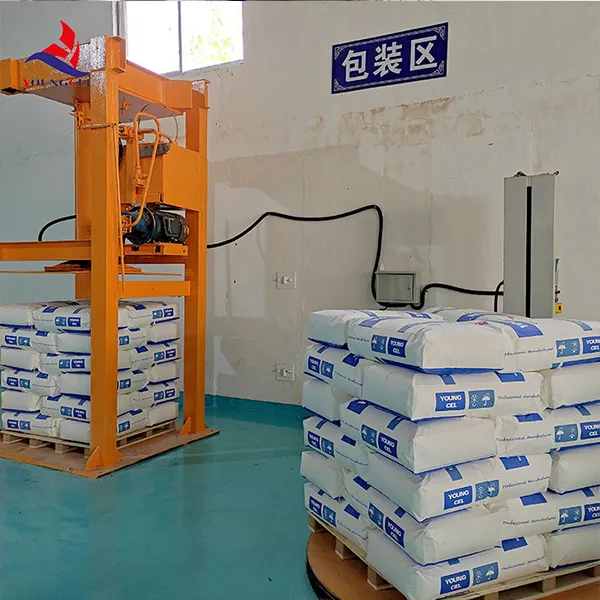HPMC Chemical An Overview
Hydroxypropyl Methylcellulose (HPMC) is a versatile and widely used compound in various industries, particularly in pharmaceuticals, food, and construction. Its unique properties make it an essential ingredient for formulating a range of products, from drug delivery systems to construction materials. This article will explore the chemical composition, properties, applications, and benefits of HPMC, particularly focusing on its significance in the year 2023.
Chemical Composition and Properties
HPMC is a cellulose derivative that is produced by modifying cellulose, a natural polymer found in the cell walls of plants. The modification involves the introduction of hydroxypropyl and methyl groups into the cellulose structure, which significantly enhances its solubility in water and expands its usability across different sectors. HPMC is typically available in various viscosities and polymer concentrations, making it adaptable to specific formulations.
One of the key physical properties of HPMC is its ability to form films and gels. When mixed with water, HPMC swells and forms a gel-like substance, which can be utilized for controlled release in drug formulations. Additionally, HPMC's excellent thickening, binding, and emulsifying properties complement its film-forming capabilities, making it a staple in many industries.
Applications in Different Industries
1. Pharmaceuticals In the pharmaceutical industry, HPMC serves multiple roles. It is commonly used as a binder in tablet formulations, as well as a thickening agent in liquid medications. Its ability to form gels makes it an ideal component for controlled-release drug delivery systems, allowing for a sustained release of active ingredients over time. HPMC's biocompatibility and non-toxic nature further boost its appeal for use in pharmaceutical applications.
2. Food Industry HPMC is utilized as a food additive due to its emulsifying and thickening properties. It is commonly found in sauces, dressings, and bakery products, where it improves texture and consistency. Its role in stabilizing emulsions and preventing ingredient separation is highly valued in food formulations. Moreover, HPMC is often used in gluten-free products, providing the necessary structure and moisture retention without compromising quality.
hpmc chemical 200000

3. Construction In the construction industry, HPMC is used as a crucial component in various building materials, including cement-based adhesives, tile grouts, and joint compounds. Its water-retention properties enhance the workability of mortars and plasters, allowing for better adhesion and a more durable final product. The incorporation of HPMC helps improve the performance of these materials, especially in challenging environmental conditions.
4. Cosmetics HPMC is also prominent in the cosmetic industry due to its thickening and gelling properties. It can be found in a range of personal care products, such as lotions, creams, and hair gels, where it serves as a stabilizer and enhances the aesthetic feel of the products.
Benefits of HPMC
The benefits of using HPMC are manifold. In pharmaceuticals, its ability to control drug release enhances therapeutic efficacy, resulting in improved patient compliance. In food products, it not only enhances texture but also extends shelf life by providing moisture retention. In construction materials, HPMC improves durability and workability, reducing the likelihood of cracking and improving overall quality.
As industries continually seek to innovate and improve their products, HPMC remains a vital component due to its adaptability and multifunctionality. In 2023, its importance is underscored by ongoing advancements in formulations and the growing demand for sustainable and effective materials across various fields.
Conclusion
Hydroxypropyl Methylcellulose (HPMC) has established itself as a vital chemical across a wide array of industries. Its unique properties and versatility lend themselves to various applications, from pharmaceuticals to food and construction. As technology advances and industries evolve, HPMC will undoubtedly continue to play a crucial role, contributing to the development of innovative products and solutions that meet modern challenges.
-
Rdp Powder: Key Considerations for Wholesalers in the Building Materials IndustryNewsJul.08,2025
-
Key Considerations for Wholesalers: Navigating the World of Hpmc - Based ProductsNewsJul.08,2025
-
Hpmc Detergent: Key Considerations for WholesalersNewsJul.08,2025
-
Key Considerations for Wholesalers: China Hpmc For Tile Adhesive, Coating Additives, Concrete Additives, and MoreNewsJul.08,2025
-
Crucial Considerations for Wholesalers: Navigating the World of Construction MaterialsNewsJul.08,2025
-
Key Considerations for Wholesalers Sourcing Additive For Cement, Additive For Concrete, Additive For Putty from Additive Manufacturer Shijiazhuang Gaocheng District Yongfeng Cellulose Co., Ltd.NewsJul.08,2025




